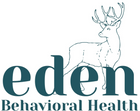Summary:
Child therapy for ADHD uses structured, evidence-based strategies—like behavioral therapy, parent training, and skill-building activities—to help children manage inattention, impulsivity, and hyperactivity. Through approaches such as Cognitive Behavioral Therapy (CBT), behavioral parent training, and play-based interventions, children can develop coping skills, improve focus, and succeed at home, school, and in social settings.
What Is ADHD in Children?
Attention-Deficit/Hyperactivity Disorder (ADHD) is a neurodevelopmental condition that affects a child’s ability to focus, control impulses, and regulate activity levels.
ADHD symptoms are typically grouped into three presentations:
-
Predominantly Inattentive Type (difficulty sustaining attention, forgetfulness)
-
Predominantly Hyperactive-Impulsive Type (fidgeting, interrupting, difficulty waiting)
-
Combined Type (both inattentive and hyperactive-impulsive traits)
Early intervention with structured therapy can significantly improve outcomes for children with ADHD.
Why Therapy Matters for ADHD (Beyond Medication)
While stimulant and non-stimulant medications may be prescribed, therapy addresses skills and behaviors medication alone cannot teach—like organization, emotional regulation, and social skills.
Benefits of child therapy for ADHD:
-
Teaches coping strategies for emotional and behavioral regulation
-
Builds executive function skills (planning, time management)
-
Improves parent-child communication
-
Provides teacher collaboration tools for better school support
-
Addresses co-occurring challenges (e.g., anxiety, low self-esteem)
Types of Child Therapy for ADHD
1. Behavioral Therapy
Often the first-line recommendation for young children with ADHD, behavioral therapy uses reinforcement techniques to shape positive behavior.
Core methods include:
-
Setting clear rules and expectations
-
Using consistent consequences
-
Rewarding desired behaviors (token charts, praise)
-
Reducing triggers for challenging behaviors
2. Behavioral Parent Training (BPT) & Parent Management Training (PMT)
Empowers parents with tools to manage behaviors at home:
-
Clear communication and predictable routines
-
Positive reinforcement and limit-setting
-
Collaborative problem-solving
-
Consistency across caregivers
3. Cognitive Behavioral Therapy (CBT) for ADHD
While CBT is often used for anxiety and depression, it can help older children with ADHD:
-
Challenge unhelpful thinking patterns (“I can’t do this”)
-
Learn step-by-step problem-solving
-
Practice relaxation and mindfulness techniques
4. Play Therapy
Helps younger children with ADHD develop self-control and social skills through structured play scenarios.
-
Role-playing to practice turn-taking
-
Storytelling for emotional awareness
-
Game-based exercises to improve focus
5. Social Skills Training
Addresses peer relationship challenges:
-
Reading social cues
-
Negotiating conflict
-
Practicing conversational turn-taking
6. School-Based Interventions
Effective ADHD therapy often includes:
-
504 plans or IEP Development
-
Teacher behavior tracking
-
Breaks for movement
-
Modified assignments
How to Choose the Right ADHD Therapy for Your Child
Factors to consider:
-
Age (younger children may respond better to behavioral and play therapy; older children may benefit from CBT)
-
Severity of symptoms
-
Co-occurring conditions (anxiety, learning disorders)
-
Family involvement
-
Access to trained professionals
Supporting ADHD Treatment at Home
Parents can reinforce therapy by:
-
Maintaining consistent routines
-
Breaking tasks into smaller steps
-
Offering immediate, specific praise
-
Using visual schedules and timers
-
Encouraging physical activity
When to Seek Professional Help
You should consult a licensed Child Therapist if:
-
Symptoms cause significant disruption at home or school
-
There is ongoing academic decline
-
Emotional outbursts are frequent and intense
-
Social relationships are suffering
Frequently Asked Questions (FAQ)
Q: Can child therapy for ADHD replace medication?
A: In mild to moderate cases, behavioral therapy may be sufficient, especially for younger children. Many benefit from a combined approach.
Q: How long does ADHD therapy take to work?
A: Noticeable improvements often occur within 8-12 months, consistency over time is key for lasting change.
Q: What’s the difference between ADHD therapy and tutoring?
A: Therapy builds executive function and emotional regulation skills, while tutoring focuses on academic content.
Q: Does my child need a diagnosis before starting therapy?
A: No. A therapist can address attention and behavior challenges without a formal diagnosis, though diagnosis may help with school supports.
